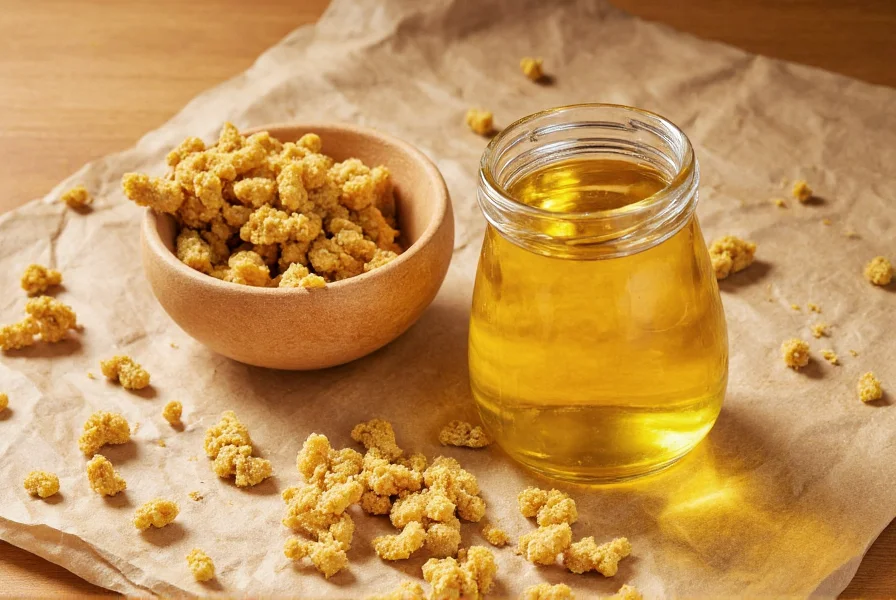When your Indian recipe calls for hing (asafoetida) but your spice cabinet comes up empty, don't panic. This pungent resin, essential in many vegetarian and lentil dishes across South Asia, has several effective alternatives that can save your cooking without compromising flavor integrity.
Asafoetida, known as hing in Hindi, is a dried latex gum extracted from the roots of Ferula plants. Its sulfurous aroma—reminiscent of garlic, onion, and leek—makes it indispensable in dishes where alliums are avoided for religious or dietary reasons. The compound transforms during cooking, mellowing into a savory umami foundation rather than overpowering the dish.
Why You Might Need an Asafoetida Substitute
Chefs and home cooks seek hing alternatives for various reasons: limited availability outside South Asia, dietary restrictions, religious practices prohibiting alliums, or simply running out mid-recipe. Understanding what makes asafoetida unique helps identify suitable replacements that maintain the intended flavor profile of your dish.
Top Asafoetida Substitutes Ranked by Effectiveness

1. Garlic Powder (Best All-Purpose Substitute)
Garlic powder provides the closest approximation to asafoetida's sulfurous notes. Use 1/8 teaspoon garlic powder for every pinch of hing called for in your recipe. This substitution works exceptionally well in dals, vegetable curries, and rice dishes. Add it early in the tempering process with hot oil to bloom the flavors properly.
2. Onion Powder (Excellent Alternative)
Onion powder offers a milder but complementary flavor profile. Substitute 1/4 teaspoon onion powder per pinch of asafoetida. This works particularly well in dishes where you want a subtle sweetness alongside the savory notes. Combine with a pinch of turmeric for enhanced color and depth in lentil preparations.
3. Garlic and Onion Powder Combination (Superior Flavor Balance)
For the most balanced substitute, use equal parts garlic and onion powder totaling 1/4 teaspoon per pinch of asafoetida. This combination captures both the sharpness and sweetness of authentic hing. Ideal for complex dishes like sambar, rasam, and vegetable stir-fries where nuanced flavor matters.
4. Fermented Umami Alternatives (For Depth in Specific Dishes)
Vegan fish sauce (1/4 teaspoon) or mushroom powder (1/2 teaspoon) can provide the umami depth asafoetida contributes, especially in liquid-based dishes. These work best in soups, stews, and braises but may alter the traditional flavor profile. Use sparingly and adjust to taste.
| Substitute | Ratio (per pinch hing) | Best For | Limitations |
|---|---|---|---|
| Garlic powder | 1/8 teaspoon | Dals, vegetable curries | Stronger garlic flavor than hing |
| Onion powder | 1/4 teaspoon | Rice dishes, mild curries | Sweeter profile than hing |
| Garlic + onion powder | 1/8 tsp each | Complex dishes, sambar | Requires two ingredients |
| Vegan fish sauce | 1/4 teaspoon | Soups, stews | Non-traditional flavor profile |
Substitution Guidelines for Specific Dishes
Not all asafoetida substitutes work equally well across every Indian dish. Understanding which alternative performs best for specific recipes ensures your cooking maintains authenticity:
- Lentil dishes (dals): Garlic powder provides the necessary depth without overwhelming the delicate lentil flavor. Add during tempering with cumin seeds.
- Vegetable curries: The garlic-onion powder combination creates balanced flavor complexity that complements mixed vegetables.
- Rice preparations: Onion powder works best in biryanis and pulao where a subtle sweetness enhances the dish.
- Fermented dishes (idli, dosa): Skip substitution entirely—these naturally develop similar compounds during fermentation.
Avoiding Common Substitution Mistakes
Many home cooks make critical errors when replacing asafoetida that compromise their dishes:
- Using fresh garlic or onion: These introduce moisture and raw flavors that differ significantly from powdered forms. Stick to dry powders for authentic results.
- Incorrect ratios: Asafoetida is potent—a pinch goes a long way. Overcompensating with substitutes creates overpowering flavors.
- Adding too late: Like authentic hing, substitutes should be added during the tempering stage (tadka) in hot oil to properly develop their flavors.
- Ignoring regional variations: Some South Indian recipes rely more heavily on asafoetida than North Indian dishes—adjust substitutions accordingly.
Creating Homemade Asafoetida Substitute Blend
For frequent Indian cooking, prepare a dedicated substitute blend:
- Mix 2 tablespoons garlic powder, 2 tablespoons onion powder, and 1 teaspoon ground fenugreek
- Add 1/2 teaspoon turmeric for color approximation
- Store in an airtight container away from light
- Use 1/4 teaspoon of this blend per pinch of asafoetida required
This custom blend maintains consistent flavor in your cooking and eliminates measurement guesswork during meal preparation. The fenugreek adds complexity that mimics asafoetida's distinctive character better than garlic or onion alone.

Understanding Asafoetida's Unique Role in Indian Cuisine
Asafoetida serves multiple functions beyond flavor: it aids digestion of legumes, reduces gas production, and acts as a preservative in certain preparations. While substitutes address the flavor component, they don't replicate these additional benefits. Consider adding a pinch of ajwain (carom seeds) to your tempering when using substitutes to partially compensate for the digestive properties.
FAQs About Hing (Asafoetida) Substitutes
Can I skip asafoetida completely in recipes?
Yes, you can omit asafoetida, but your dish will lack the distinctive savory depth it provides. In lentil dishes especially, the flavor profile will be noticeably different. For best results, use a substitute rather than skipping it entirely.
What's the difference between asafoetida and hing?
There is no difference—hing is simply the Hindi name for asafoetida. Both terms refer to the same resinous gum from Ferula plants used as a spice in Indian cooking.
Can I use fresh garlic instead of asafoetida?
Fresh garlic creates a different flavor profile and adds moisture that alters the dish's texture. For best results, use garlic powder instead, which more closely mimics asafoetida's concentrated, dry nature. If using fresh garlic, mince extremely finely and use half the amount you would for powder.
How should I store asafoetida to maintain freshness?
Store asafoetida in an airtight container away from light and moisture. Properly stored, it maintains potency for 2-3 years. Exposure to air causes it to lose its distinctive aroma more quickly than other spices.
Why does asafoetida smell so strong but taste mild in dishes?
Raw asafoetida has a powerful sulfurous odor similar to rotten eggs, but when cooked in hot oil (tempered), the volatile compounds transform, mellowing into a savory, umami-rich flavor that enhances rather than dominates the dish. This chemical transformation is why proper tempering technique matters.











 浙公网安备
33010002000092号
浙公网安备
33010002000092号 浙B2-20120091-4
浙B2-20120091-4